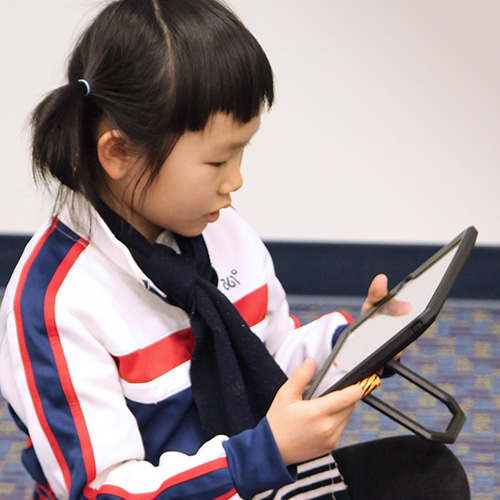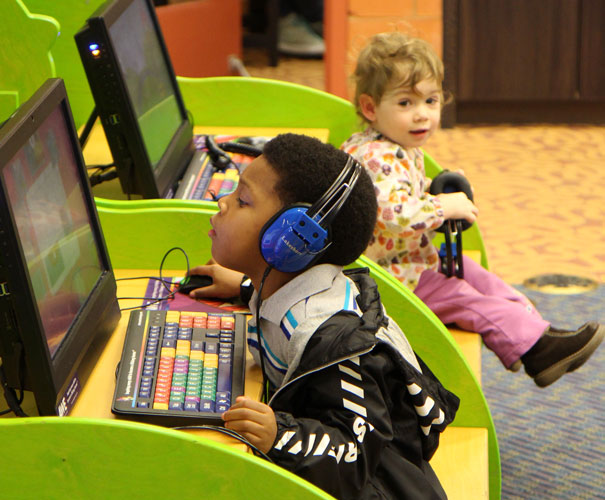 Every day we rely on the mini computers in our pockets to keep us informed, entertained and connected to the world. And the amount of time we spend looking at screens — TVs, phones, computers — continues to climb as we get more and more dependent on our devices. Our children haven’t known a world without this technology, but what effect is it having on them?
Every day we rely on the mini computers in our pockets to keep us informed, entertained and connected to the world. And the amount of time we spend looking at screens — TVs, phones, computers — continues to climb as we get more and more dependent on our devices. Our children haven’t known a world without this technology, but what effect is it having on them?
Researchers have been asking this same question, and several studies have identified similar pros and cons to screen time for children. Causes for concern that come up repeatedly are anxiety, attention problems, behavioral issues, depression, language and social skills delays, learning issues, obesity and sleep disturbances.
As with anything in life, moderation is key. See the guidelines for suggested screen time limits by age at the end of this article. Television, computers and other digital media are here to stay, and it’s not all bad. There are many benefits to children using technology.
Learning
Educational apps, kids TV shows and online resources offer engaging ways for youth to learn interactively. Toddlers can gain school readiness skills through stories, puzzles and other games. eBooks are accessible from anywhere and offer a wide range of topics so kids can find reading materials that engage their interests, which leads to improved reading proficiency. Older students can become independent learners and improve critical thinking skills by playing games that challenge them to experiment and find creative ways to solve problems.
Motor Skills
Playing video games, using touch screens and keyboards all improve hand-eye coordination in young children, one of the important fine motor skills they should master before they start kindergarten. Some interactive TV shows and videos encourage kids to jump and dance which improves their gross motor skills.
Communication and Socialization
Using digital apps to interact with family and friends helps kids build strong personal relationships with others. According to the non-profit Internet Matters, “technology takes away physical barriers to social connections — which is important for children who find it hard to make friends or have special interests or special needs.”* Connecting with others to play video games or streaming a movie together online can foster a sense of belonging and camaraderie.
Since screens are a part of our everyday lives, it’s important for children to understand how to use technology safely and effectively, with the guidance of their families, caregivers and educators. What content kids engage with and for how long matters. “If you think about screen time the way you think about nutrition, there’s like digital broccoli and digital ice cream,” says Julianna Miner, mom of three and author of “Raising a Screen-Smart Kid: Embrace the Good and Avoid the Bad in the Digital Age.” ”Reading on an e-reader is definitely digital broccoli,” she says. “And while you don’t want your kid to overdo it on broccoli, because they’re going to have an upset stomach, the amount of broccoli that you’re going to allow them to eat every day is going to be far greater than the junk food, right?”**
What the Library Offers
 Early learning computers in the children’s area of each library are loaded with a variety of age-appropriate, interactive learning programs. Our collection of Playaway Launchpads are pre-loaded digital tablets with educational games that cover topics such as reading, science, math and much more for different age groups.
Early learning computers in the children’s area of each library are loaded with a variety of age-appropriate, interactive learning programs. Our collection of Playaway Launchpads are pre-loaded digital tablets with educational games that cover topics such as reading, science, math and much more for different age groups.
The library’s online resources are free. Access all of these learning services with your library card.
- Brainfuse HelpNow provides free online tutoring and academic help for elementary through college students.
- Hoopla has a Kids Mode which offers kid-friendly eBooks, movies and music for ages 12 and younger.
- Lerner Maker Lab offers a variety of crafts, recipes and other kid-friendly projects for hands-on fun.
- LOTE4Kids (Languages Other Than English) gives you access to hundreds of animated stories in various languages. Listen to and read along with over 4,000 stories in more than 50 languages as well as English.
- “Music and Movement” videos on the library’s YouTube channel get your kids moving with nearly 100 videos of our favorite rhymes, songs, chants and fingerplays.
- OverDrive’s kid’s collection features eBooks for teens and younger.
- “Recipes for Fun” videos, starring our children’s librarians, demonstrate favorite activities for you to try at home.
- TumbleBooks engages early readers with animated, talking picture books with sound, music and narration.You can read them, or have them read to you.
Screen Time Guidelines by Age
Source: “What Does Too Much Screen Time Do to Children’s Brains?,” August 24, 2023, New York Presbyterian Health Matters
18 Months and Younger
Avoid use of screens except for video-chatting.
18-24 Months
Parents who want to introduce digital media should choose high-quality programming, and watch and interact with it alongside their children to help them understand what
they’re seeing.
2-5 Years
Limit screen use to 1 hour per day of high-quality programs. Parents should co-view media with children to help them understand what they are seeing and apply it to the world around them.
6-12 Years
Place consistent limits on the time spent using media and the types of media, and make sure media does not take the place of adequate sleep, physical activity and other behaviors essential to health.
12 Years and Older
Designate media-free times together, such as dinner or driving, as well as media-free locations at home, such as bedrooms.
* www.internetmatters.org/issues/screen-time/learn-about-it
** “The Benefits of Screen Time in Play That Parents Need to Know,” December 19, 2022, Parents.com
